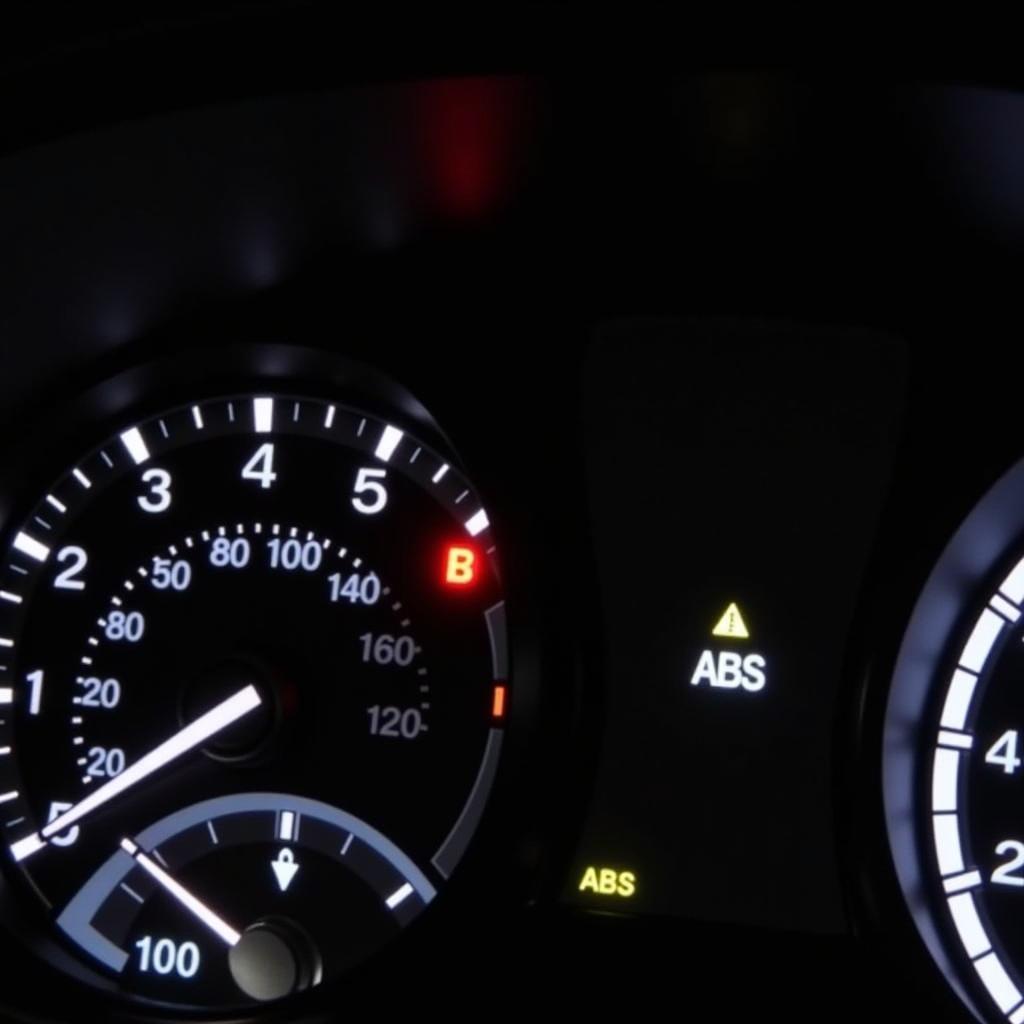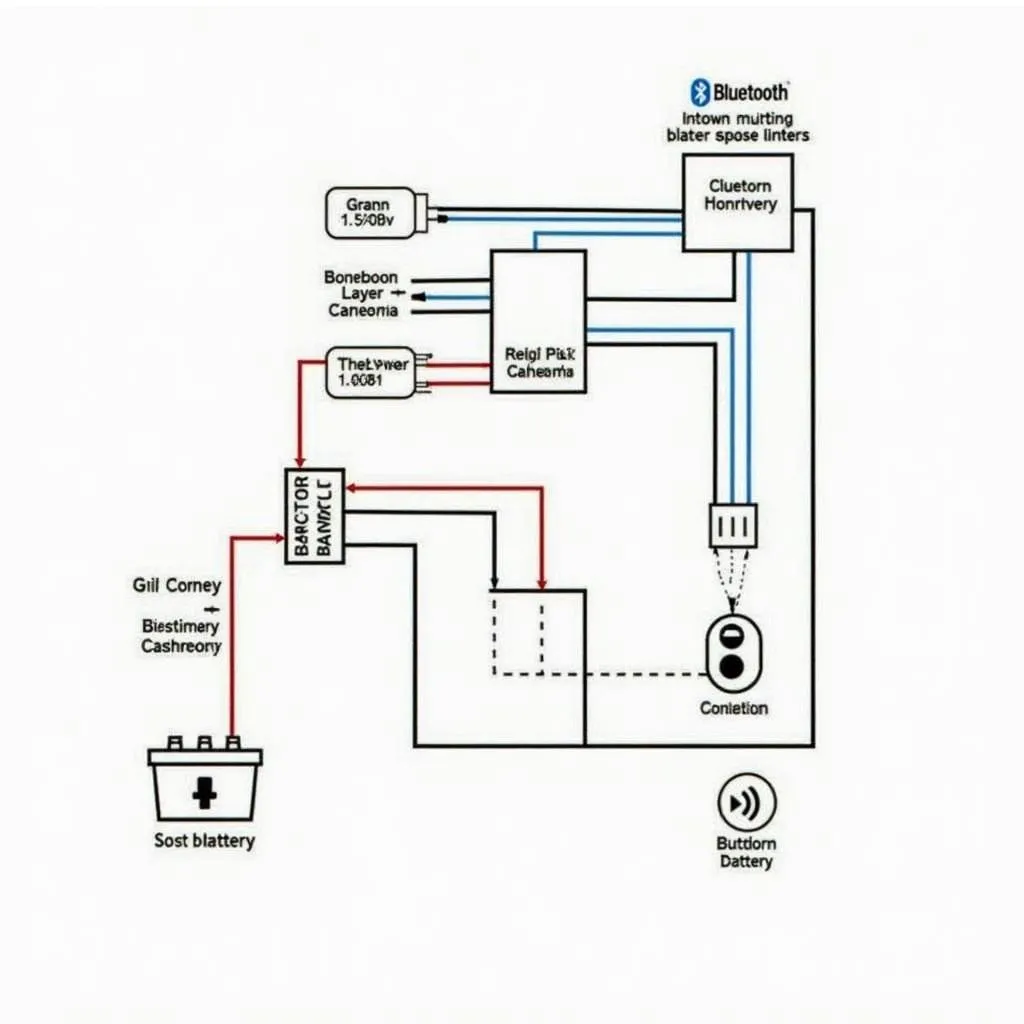Understanding your Seat Arona’s warning lights is crucial for maintaining its performance and safety. These illuminated symbols on your dashboard act as your car’s communication system, alerting you to potential issues ranging from minor inconveniences to serious malfunctions. This guide will equip you with the knowledge to interpret these signals and take appropriate action. After reading this guide, you’ll be better prepared to address any warning lights that appear. See our guide on Seat Arona warning symbols for more information.
Common Seat Arona Warning Lights and Their Meanings
Your Seat Arona uses a variety of warning lights to communicate different issues. Recognizing these lights can help you diagnose problems early and prevent further damage. Let’s explore some of the most frequently encountered warning lights:
-
Engine Management Light (EPC Warning Light): This light, often appearing as an engine outline or the letters “EPC,” indicates a problem within the engine management system. The issue could range from a faulty sensor to a more serious mechanical problem. It’s essential to have this checked by a professional as soon as possible. Learn more about the EPC warning light in Seat vehicles, or specifically for your Arona model.
-
Brake System Warning Light: A red exclamation mark within a circle usually symbolizes a problem with the braking system. This could indicate low brake fluid, worn brake pads, or a malfunctioning ABS system. Ignoring this warning can have serious safety implications.
-
Tire Pressure Monitoring System (TPMS) Light: This light, often depicted as an exclamation mark within a tire cross-section, alerts you to low tire pressure. Proper tire pressure is vital for optimal fuel efficiency, handling, and tire longevity.
-
Battery Warning Light: A battery symbol illuminating indicates a problem with the charging system. This could be a failing alternator, a loose battery connection, or a dying battery.
-
Coolant Temperature Warning Light: This light, typically depicted as a thermometer in liquid, warns of overheating. Continued driving with this light on can lead to severe engine damage.
Troubleshooting Seat Arona Warning Lights
While some warning lights may require professional attention, others can be addressed with simple checks. Here’s a step-by-step guide to troubleshooting common warning lights:
-
Consult your owner’s manual: Your Seat Arona’s owner’s manual provides a detailed explanation of each warning light and recommended actions.
-
Check fluid levels: Ensure your engine oil, coolant, brake fluid, and power steering fluid are at the correct levels. Top up any fluids that are low.
-
Inspect your tires: Check your tire pressure using a reliable gauge. Inflate or deflate as needed to match the recommended pressure listed in your owner’s manual or on the tire placard.
-
Examine battery connections: Ensure the battery terminals are clean and tightly connected.
-
Listen for unusual noises: Pay attention to any unusual sounds coming from your engine or other components.
When to Seek Professional Help
While some warning lights can be addressed with simple checks, others require professional diagnosis and repair. If you encounter any of the following, it’s crucial to seek professional help immediately:
-
Engine Management Light (EPC): This light requires diagnostic equipment to pinpoint the exact issue. Ignoring it can lead to further engine damage.
-
Brake System Warning Light: Problems with the braking system can compromise your safety. Professional diagnosis and repair are essential.
-
Airbag Warning Light: A malfunctioning airbag system can put you and your passengers at risk in an accident.
-
Steering Warning Light: Issues with the steering system can make your vehicle difficult to control. Don’t risk driving with this light illuminated.
“Ignoring warning lights can be a costly mistake,” advises John Smith, Senior Automotive Technician at Smith Automotive. “Early diagnosis and repair can often prevent minor issues from escalating into major problems.”
Conclusion
Understanding your Seat Arona warning lights is essential for safe and efficient vehicle operation. By familiarizing yourself with these lights and their meanings, you can take proactive steps to address potential issues and keep your Arona running smoothly. Don’t hesitate to consult a professional if you encounter a warning light you’re unsure about. Ignoring warning lights can result in costly repairs down the line. For more information about warning lights, check out our guide on the Seat Arona AdBlue warning.
FAQ
-
What should I do if my Seat Arona EPC warning light comes on? You should immediately seek professional help to diagnose the issue.
-
Can I drive my Seat Arona with the TPMS light on? While you can technically drive, it’s not recommended. Low tire pressure can affect handling and fuel efficiency.
-
What does a flashing brake warning light mean? A flashing brake warning light can indicate a serious issue with the ABS system or low brake fluid. Stop driving immediately.
-
Why is my Seat Arona battery light on even after a new battery? The issue might be with the alternator or charging system, not necessarily the battery.
-
What should I do if my Seat Arona coolant warning light comes on? Pull over immediately and allow the engine to cool down. Continuing to drive could cause severe engine damage.
-
Where can I find more information about specific Seat Arona warning symbols? Refer to your owner’s manual or check online resources.
-
Is it safe to ignore a warning light if it goes off on its own? Even if a warning light goes off, it’s still a good idea to have it checked by a professional to ensure there’s no underlying issue.


